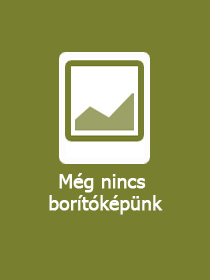
Treatise on Process Metallurgy, Volume 2B
Unit Processes
-
10% KEDVEZMÉNY?
- A kedvezmény csak az 'Értesítés a kedvenc témákról' hírlevelünk címzettjeinek rendeléseire érvényes.
- Kiadói listaár EUR 323.99
-
137 436 Ft (130 891 Ft + 5% áfa)
Az ár azért becsült, mert a rendelés pillanatában nem lehet pontosan tudni, hogy a beérkezéskor milyen lesz a forint árfolyama az adott termék eredeti devizájához képest. Ha a forint romlana, kissé többet, ha javulna, kissé kevesebbet kell majd fizetnie.
- Kedvezmény(ek) 10% (cc. 13 744 Ft off)
- Discounted price 123 692 Ft (117 802 Ft + 5% áfa)
137 436 Ft

Beszerezhetőség
Még nem jelent meg, de rendelhető. A megjelenéstől számított néhány héten belül megérkezik.
Why don't you give exact delivery time?
A beszerzés időigényét az eddigi tapasztalatokra alapozva adjuk meg. Azért becsült, mert a terméket külföldről hozzuk be, így a kiadó kiszolgálásának pillanatnyi gyorsaságától is függ. A megadottnál gyorsabb és lassabb szállítás is elképzelhető, de mindent megteszünk, hogy Ön a lehető leghamarabb jusson hozzá a termékhez.
A termék adatai:
- Kiadó Elsevier
- Megjelenés dátuma 2025. május 26.
- ISBN 9780443402944
- Kötéstípus Keménykötés
- Terjedelem700 oldal
- Méret 276x216 mm
- Nyelv angol 700
Kategóriák
Hosszú leírás:
Treatise on Process Metallurgy, Volume 2B: Unit Processes, presents various unit processes with an emphasis on mineral processing, hydrometallurgy, and electrochemical materials and energy processes. The book highlights the roles of these processes in beneficiation, rare-earth extraction, utilization of lean resources, coal extraction, and biofuels, reflecting the shift toward green and electrochemical processes. Basic knowledge of thermodynamics and kinetics is provided for better understanding of metallurgical processes. The first section of the book covers mineral processing, providing insight on comminution, separation processes, dewatering, and tailings disposal. The second section focuses on hydrometallurgy, discussing leaching, separation-purification, metal recovery, and battery materials, and the book concludes with a section studying electrochemical material and energy, featuring coverage of molten oxide electrolysis, molten carbonate fuel cells, various sensors, and ionic liquids. Each section also includes various case studies, demonstrating the use of the concepts in real-world settings.
- Covers mineral processing, electrochemical materials, and hydrometallurgy and their roles in beneficiation, rare-earth extraction, utilization of lean resources, coal extraction, and biofuels
- Provides basic knowledge on thermodynamics and kinetics needed for understanding the principles of metallurgical processes
- Includes a section on electrochemical materials and energy processes, covering molten salts electrolysis, fuel cells, and nuclear molten salt reactors
- Features insight into the entire process chain, unit processes that are generally overlooked, and unit processes that combine hydro-, electro-, and pyro-processes in an optimal way
Tartalomjegyzék:
Section 1
1.1 Mineral Processing, Importance, Introduction
1. 2 Ore Body Knowledge
1.3 Beneficiation, Physical separation processes
1.4.1 Comminution
1.4.2 Separation Processes
1.4.2.1 Classification
1.4.2.2 Gravity (Density)
1.4.2.3 Dense Media Separation
1.4.2.4 Floatation
1.4.2.5 Magnetic Separation
1.4.2.6 Electrostatic Separation
1.4.2.7 Ore sorting
1.5. Emerging Trends in Mining and Mineral Processing
1.6. Dewatering
1.7. Tailings Disposal
1.8. Case studies
1.8.1 Iron ore
1.8.2 Non-ferrous
1.8.3 Metallurgical Coal
1.8.4 Mineral Sands
1.8.5 Industrial Minerals-Graphite
1.8.6 Diamond
Section 2
2. 1 Importance of Hydrometallurgy, Introduction
2.2 Extraction
2.2.1 Introduction
2.2.2. Leaching Chemistries: Sulfate, Chloride, etc, thermo, complexation, etc., unconventional lixiviants and catalysts:
2.2.3. Leaching Kinetics and mechanisms.
2.2.4. Heap Leaching
2.2.5. Tank Leaching
2.2.6 Bio leaching
2.2.7. Autoclave Leaching
2.3. Separation-Purification
2.3.1. Introduction
2.3.2. SX
2.3.3. IX
2.3.4. Precipitation
2. 4. Metal Recovery
2.4.1. Introduction
2.4.2. Electrowinning and Electrorefining
2.4.2. Chemical Reduction
2.5. Case studies
2.5.1. Gold
2.5.2. Copper
2.5.3. Nickel and Cobalt
2.6 Frontiers
2.6.1. Battery materials
2.6.2. Rare earths
2.6.3. Environmental issues
Section 3: Electrochemical material and energy
3. 1. Introduction
3.2. Molten Oxide Electrolysis
3.3. OS Process
3.4. FFC-Cambridge Process
3.5. Solid Oxide Membrane Process
3.6. Refining of Nuclear Materials in Salt Melts
3.7. Preparation of Nanocarbons in Molten Salts
3.8. Thermal Batteries
3.9. Sodium Nickel Chloride (ZEBRA) Battery
3.10. Molten Metal Batteries
3.11. Molten Carbonate Fuel Cells
3.12. AMTEC
3.13. Nuclear Molten Salt Reactor
3.14. Oxygen Sensors for Iron and Copper Melts
3.15. Hydrogen Sensors for Molten Aluminum and its Alloys
3.16. Oxygen, Hydrogen and Carbon Sensors for Molten Sodium
3.17. Ionic Liquids in Process Metallurgy




